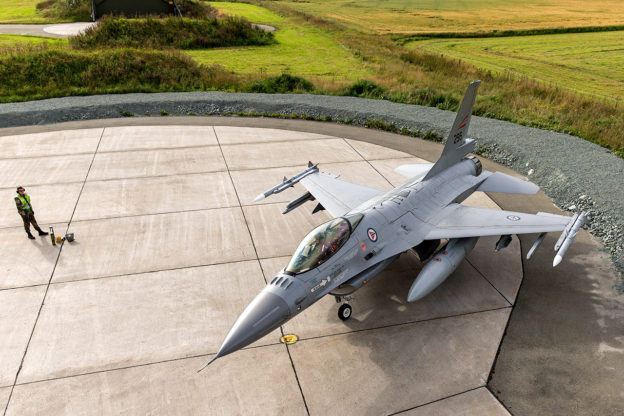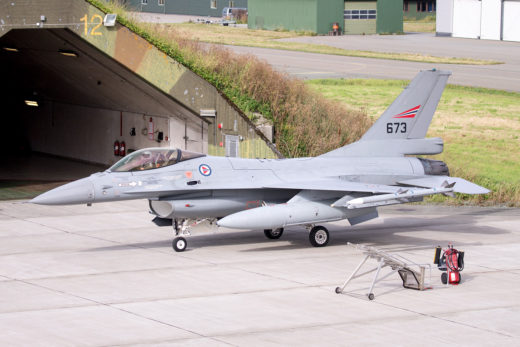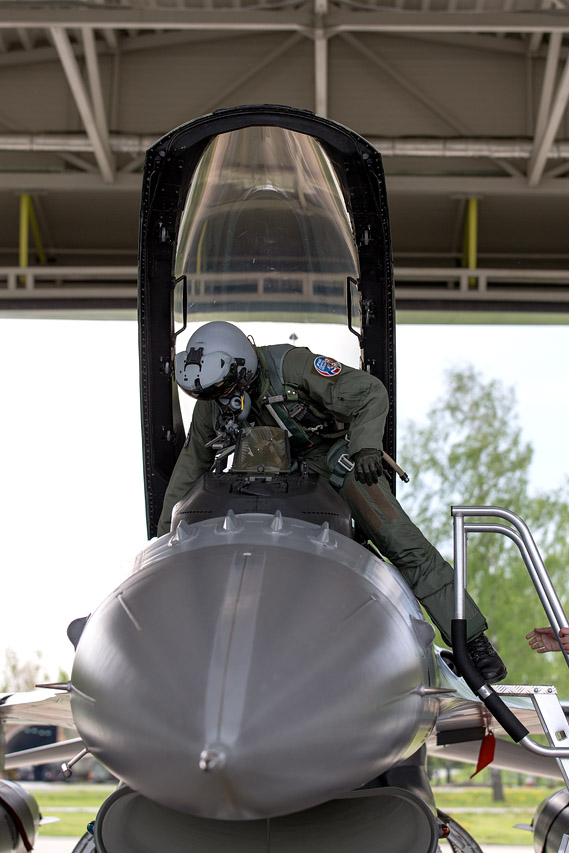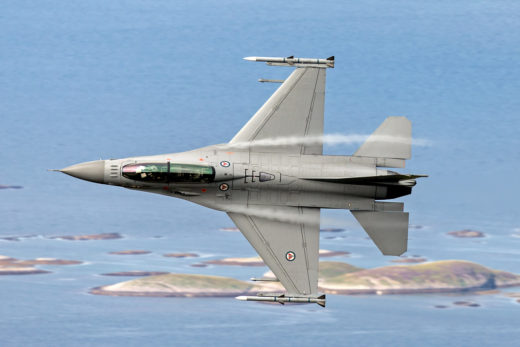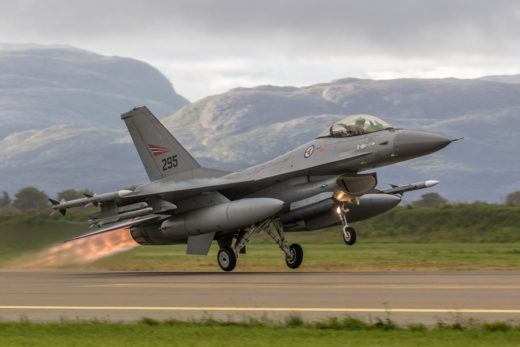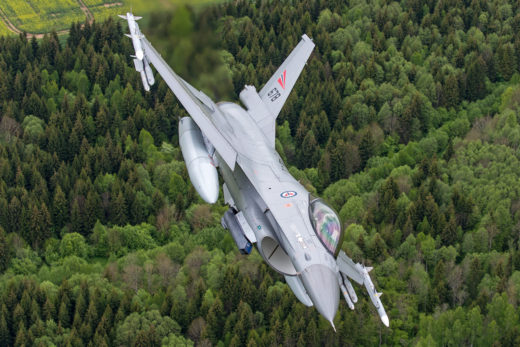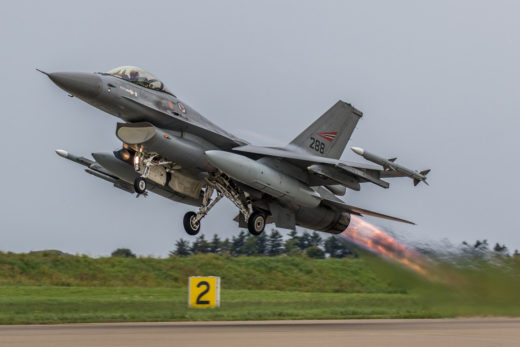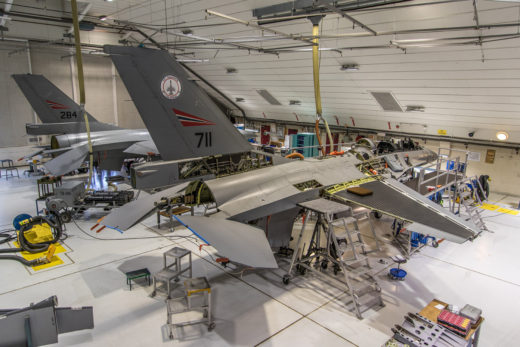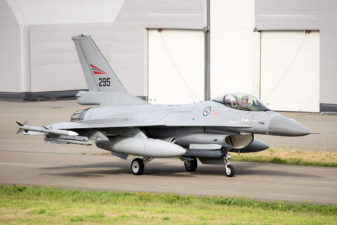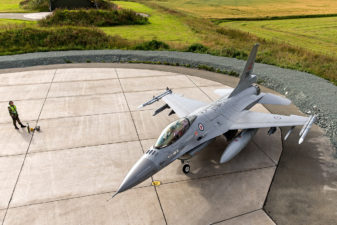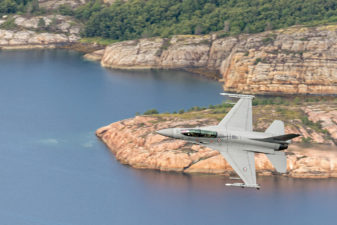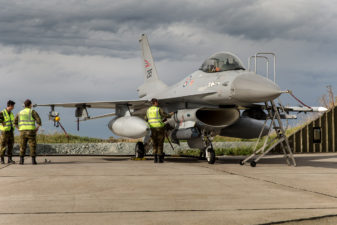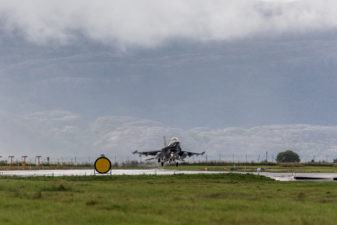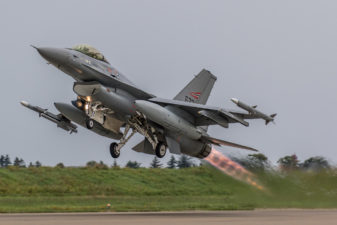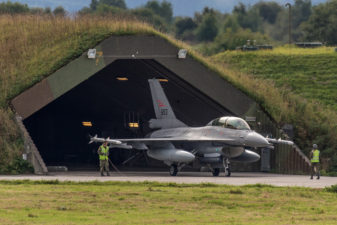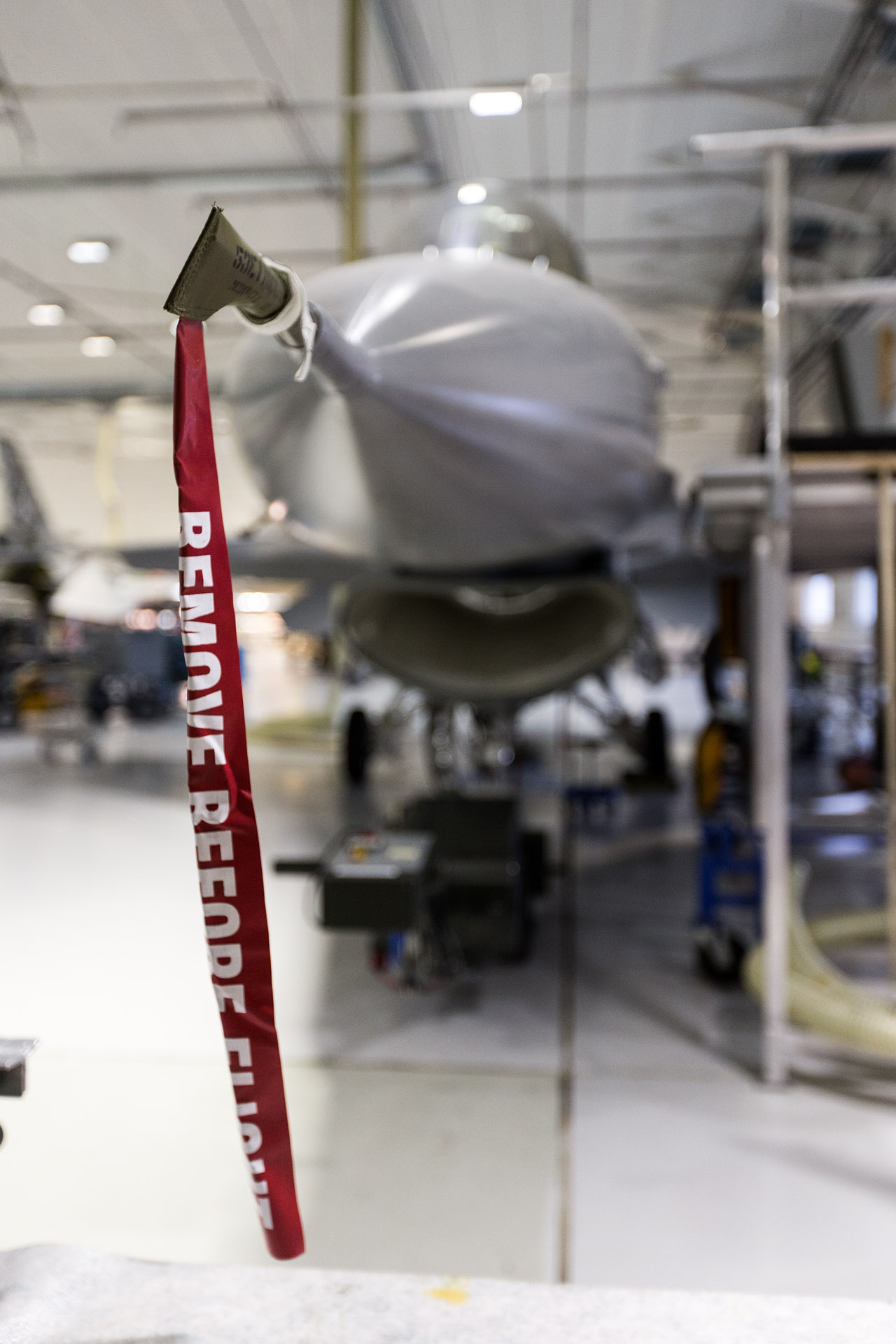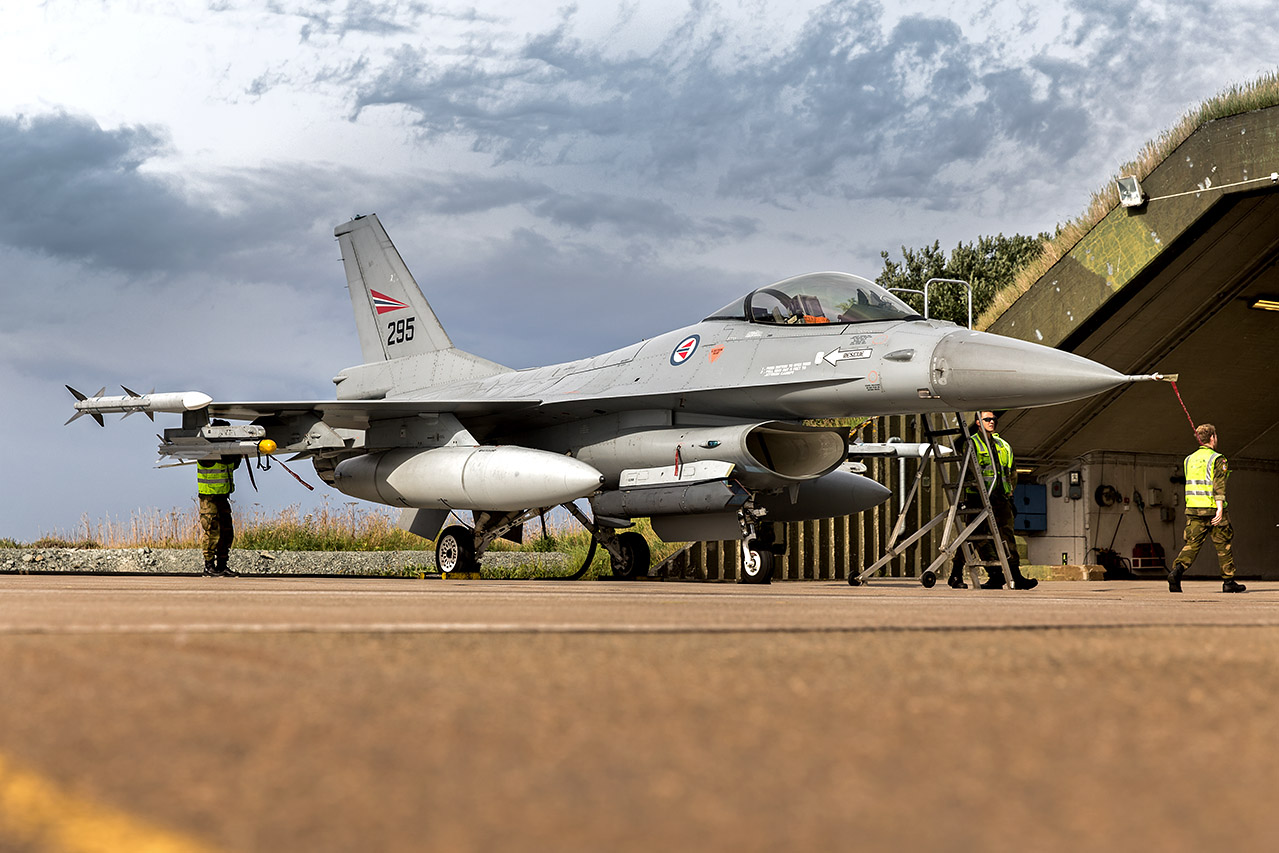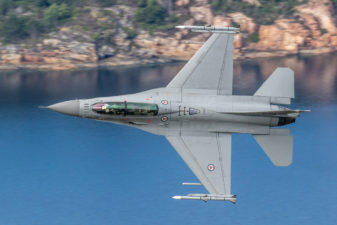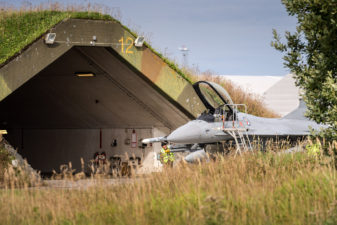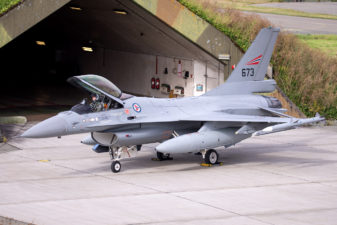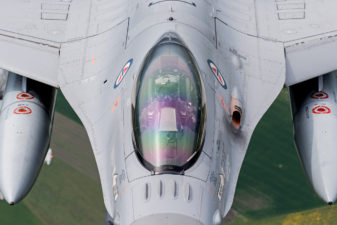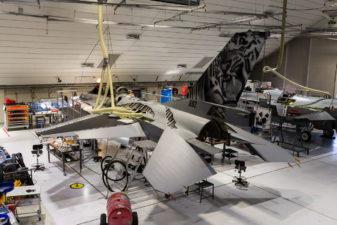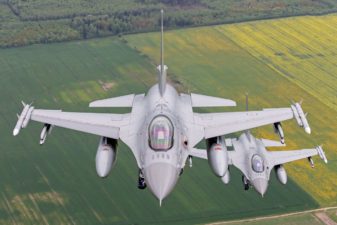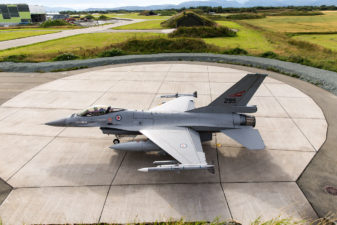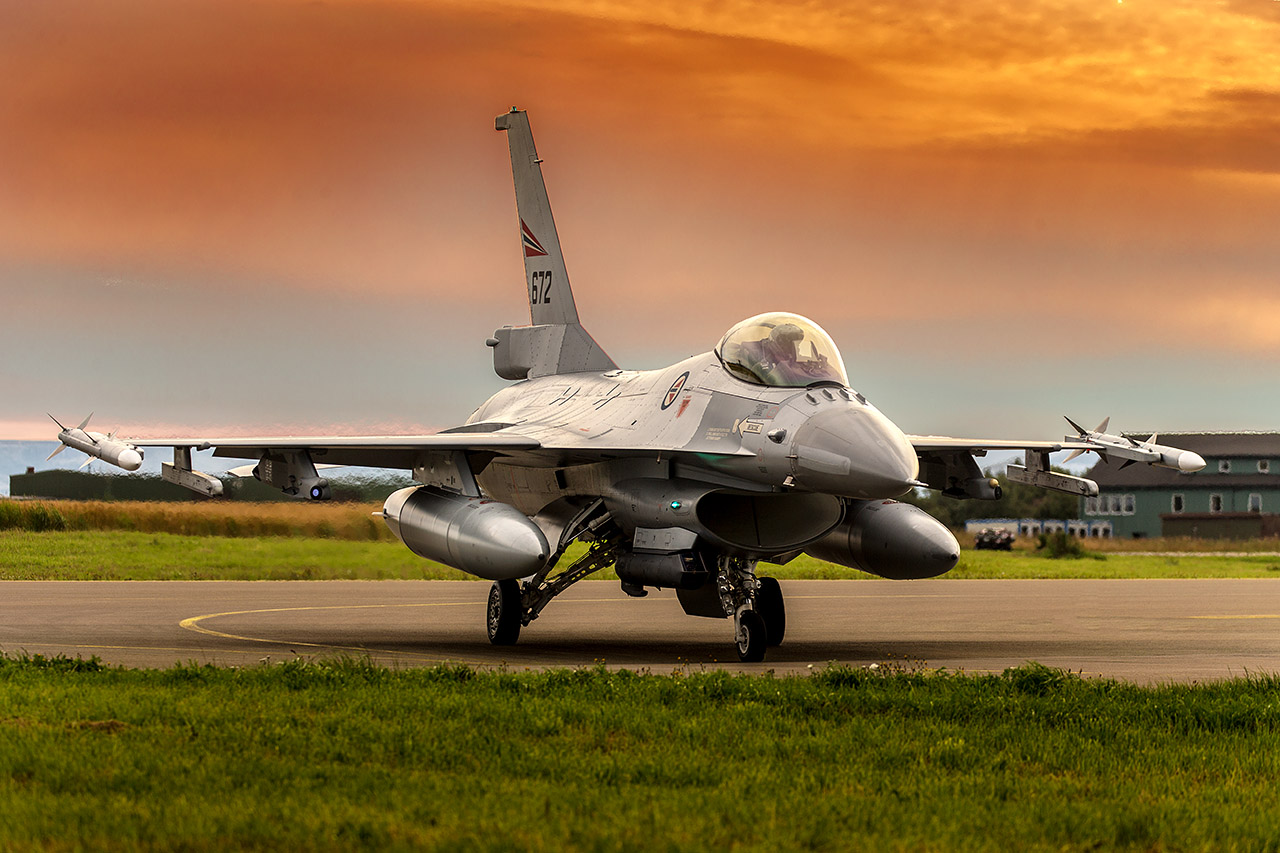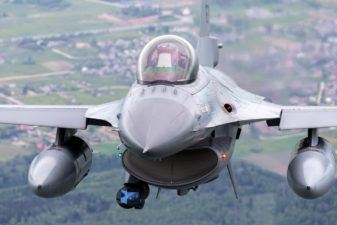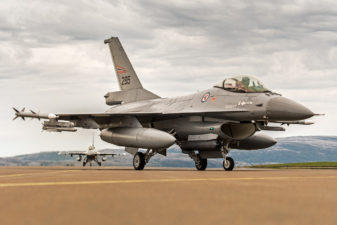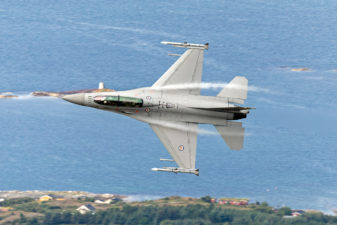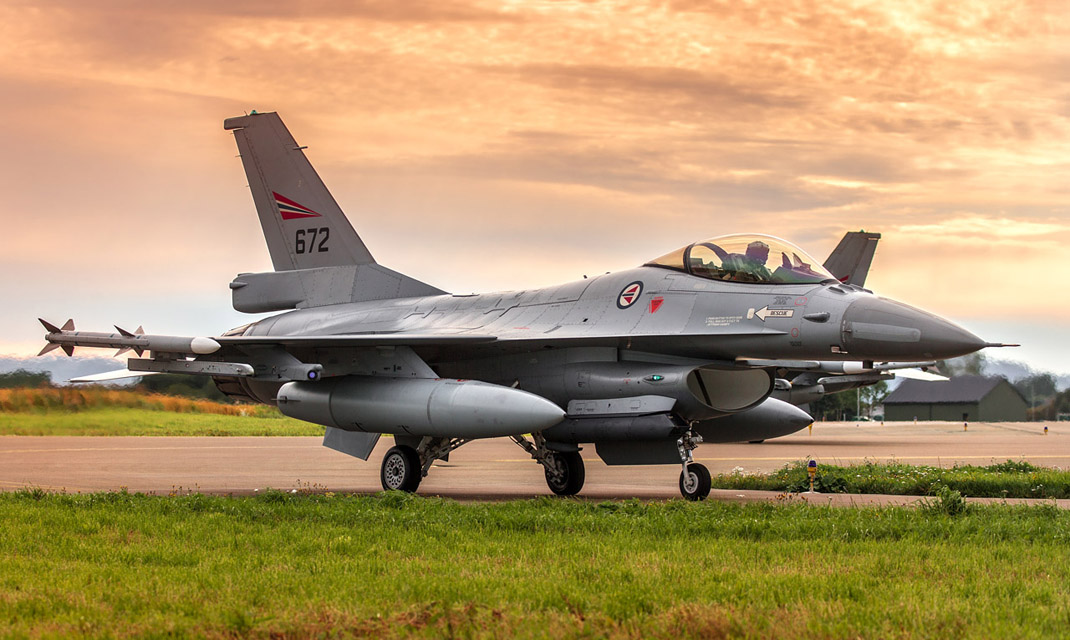
Royal Norwegian Air Force – Ørland
Located on the west coast of Norway, Ørland Hovedflystasjon, Ørland Air Base, is one of two Norwegian F-16 bases,
the other being Bodø further north on the coast.
the other being Bodø further north on the coast.
|
Super base – Ørland Air Base
Located on the west coast of Norway, Ørland Hovedflystasjon, Ørland Air Base, is one of two Norwegian F-16 bases, the other being Bodø further north on the coast.
Ørland Air base was built in 1941 by the then occupying German troops in Norway. The reason for building the air base was to enable the German Luftwaffe to attack allied convoys sailing supplies to the Russian harbor in Murmansk. The first German aircraft to arrive at the base were Focke-Wulf Fw 200 Condors, and in June of 1942 a squadron of Junkers Ju 87 Stuka dive-bombers were deployed to the base. The complement of aircraft at the base were further expanded when first a squadron of Messerschmitt Bf 109s and later a squadron of Focke-Wulf Fw 190 fighters arrived at the base. |
“In 1950 the Norwegian government decided to reopen the base and make it a permanent deployable base.”
After the war
When the German troops in Norway surrendered, they left behind a fully armed and defendable airfield, complete with docks and infrastructure.
After the war, the first Norwegian aircraft to be located at Ørland, was a squadron for Spitfires, but already in 1946 the base was closed down and all the wooden buildings torn down. The woods were then transported north, to help rebuild Finnmark, which had been almost completely destroyed by the Germans. In the following years the base were sporadically used for exercises until 1950. In 1950 the Norwegian government decided to reopen the base and make it a permanent deployable base. In 1952 a new runway was constructed, and in 1954 the base was expanded to handle NATO forces. In 1954 the 338 Squadron was relocated from Sola airbase to Ørland, flying the F-84E Thunderjet. Today the squadron flies the F-16A/B Fighting Falcon, and it remains the only fighter squadron on the base. In August of 1970 a detachment from 330 Squadron arrived flying the Grumman HU-16 Albatross. In 1973 330 Squadron converted to the Westland Sea King, which they still fly today. The squadron is responsible for SAR operations in the area. |
|
|
|
|
The squadrons
In 1983 the airbase was updated to accommodate NATO’s E-3A Sentry AWACS fleet, which flies out of Geilenkirchen air base in Germany. Ørland is the only Forward Operations Location (FOL) for the NATO AWACS fleet in northern Europe, and E-3 Sentry aircrafts regularly deploy to the base.
Today the base is home to the following flying squadrons:
338 Squadron
338 squadron was activated on 1954 at Sola air base, but moved to Ørland airbase that same year. The first aircraft the squadron flew was the Republic F-84E Thunderjet. In 1955 they swapped the E model with the F-84G, a jet they flew until 1960, when the unit converted to the North American F-86F Sabre. They continued flying the F-86F until 1967, when they began flying the Northrop F-5A Freedom Fighter. After almost 20 years of flying the F-5, the squadron converted to the F-16A Fighting Falcon in 1986.
When the squadron converted to the F-16 in 1986, they were the last of the then four Norwegian fighter squadrons to do so. Despite being the last squadron to convert to the F-16, they were the first squadron to begin flying the Mid-life Update (MLU) versions of the F-16. In late 1998, early 1999 the squadron began converting to the MLU F-16 coming of the conversion line at the Kjeller depot. With the introduction of the M2 software tape during 2002, the Royal Norwegian Air Force (RNoAF) decided to integrate the PANTERA targeting pod onto their F-16s, thereby introducing a state-of-the-art targeting system to their F-16 fleet, which would allow for pinpoint bombing accuracy. The RNoAF was the first F-16 user to introduce the PANTERA pods, the export version of the Lockheed Sniper pod, to the MLU F-16s, and it clearly showed the advantages of this modern pod compared to the older Low Altitude Navigation and Targeting Infrared for Night (LATIRN) system. |
|
|
|
|
|
Mounted Cueing System
With the MLU M3 and M4 software updates, the RNoAF decided to introduce a new and more modern air-to-air missile into its inventory. After a competition, where a number of missiles, including the AIM-9X Sidewinder and the German designed IRIS-T missile participated, the IRIS-T missile was selected.
The missile takes advantage of the Helmet Mounted Cueing System used by the Norwegian F-16 pilots. As with the PANTERA targeting pod, the RNoAF became the first F-16 user to integrate the IRIS-T missile on the F-16. In 2006 the Norwegian military decided that it would be easier to pool all F-16s into one unit under the Forsvarets Logistikk Organisasjon (Air Force Logistic Organisation). This unit now controls all the F-16s in the RNoAF, and F-16s are dispersed amongst all the F-16 squadrons according to their actual needs. |
|
|
|
|
|
330 Squadron
330 squadron is the RNoAF helicopter unit responsible for military and civilian search and rescue (SAR). The unit’s home base is at Sola Air Base in southern Norway, but the unit has detachments at Rygge, Florø, Ørland, Bodø and Banak. Beside the unit’s main mission of SAR, it also performs duties as air ambulance, disaster relief and special operations support.
The squadron was formed on April 25, 1941 as 330 (Norwegian) Squadron under the Royal Air Force (RAF) Coastal Command, and base at RAF Reykjavik, as German forces at that time had occupied Norway. Here they were equipped with 18 Northrop N-3PB aircraft, and were initially tasked with providing arctic convoy escort. The N-3PB proved highly unsuited for this role however, and the squadron started focussing more on anti submarine sweeps and providing an air ambulance service from various forward deployed locations around Iceland. In June 1942, the unit received the first of a total of six Consolidated PBY-5A Catalina flying boats, and at the same time they retained six of their N-3PBs. On January 23, 1943, parts of 330 squadron were relocated to RAF Oban I Scotland, with the rest following on June 11, 1943. During their time on Iceland, the squadron flew 4379 hours (3524 in N-3PBs and 885 in the Catalinas). |
“Until the end of WW II, 330 squadron
flew over 12.000 hours from Scotland.” Scotland
In Scotland the unit switched to the Short Sunderland flying boat. Being unable to buy these expensive aircraft themselves, the RAF lend twelve aircraft, six Mk II and six Mk III) to the squadron, while the Norwegians themselves paid the operating costs. While in Scotland, a 330 squadron detachment was set up at RAF Scatsta on Shetland.
They continued to fly the same role of submarine sweeps, search and rescue and convoy escorts. Until the end of WW II, 330 squadron flew over 12.000 hours from Scotland, carrying out 655 submarine sweeps, 50 convoy escorts and 22 SAR missions. After the end of the war 330 squadron, now flying Sunderlands Mk Vs, returned to Norway and set up base at the water aerodrome at Sola Air Station, flying daily routes to Bergen Airport, Sandviken and Trondheim – almost flying more like an airliner than a military unit. Up until 1968 Norway did not have a dedicated SAR unit, but rather relied on various units equipped with suitable airframes to perform SAR as a secondary mission. This changed in 1968, when a private company was hired to operate two Sikorsky S-61 out of Sola and Bodø, while the government decided how best to set up a dedicated SAR unit. In 1970 ten Westland Sea Kings were ordered, and 330 squadron were assigned the SAR role. Headquarter was at Bodø Main Air Station, with four flights; A-flight at Bodø, B-flight at Banak, C-flight at Ørland and D-flight at Sola, with two airframes in each flight. The squadron started operations on April 25, 1973. On November 8, 2013, it was announced that the AugustaWestland AW101 had been selected as a replacement for the Sea King and a contract for 16 helicopters, with an option for six more, were signed. The helicopters are scheduled to be delivered between 2017 and 2020. |
|
|
|
|
NATO AWACS FOL
In 1983 Ørland AB was established as a Forward Operating Location (FOL) for NATO’s AWACS fleet of E-3 Sentry aircraft. Apart from providing the Sentry fleet with a base of operations in northern Europe, the base is also used for training flights, which helps in reducing the number of flights going in and out of the Sentry fleets home base at Geilenkirchen in Germany.
Since 2000, an average of over 170 AWACS sorties have been flown per year from Ørland, almost one flight every other day. A total of 33 personnel, 32 military and one civilian, work at the FOL and support the deployed AWACS crews during their stay at Ørland. International Deployments
338 Squadron is part of NATO’s Rapid Reaction Force, and since 1999 they have been deployed on numerous international missions.
From March 23 until June 10 1999, RNoAF F-16s were deployed to Grazzanise AB in Italy to take part in Operation Allied Force. This was the first time since World War II that Norway had deployed fighters into action. The Norwegian F-16s were tasked with flying Combat Air Patrol (CAP) missions, since they did not send any of their new MLU updates F-16s. The next time RNoAF F-16s were deployed on international missions were on October 1, 2002 when RNoAF F-16s were deployed to Manas AB in Kyrgyzstan to support the US led Operation Enduring Freedom. The F-16s remained at Manas until March 31, 2003. On January 1 2005, four RNoAF F-16s deployed for the first time to Siauliai AB in Lithuania to take part in NATO Baltic Air Policing mission. The four aircraft flew from Siauliai until March 31, 2005. Since this initial deployment to Siauliai, RNoAF F-16s have performed the Baltic Air Policing mission two more times, from December 16, 2007 until March 15 2007 and from May 1, 2015 until September 1 2015, both times flying from Siauliai AB. |
Operation Odyssey Dawn
As well as providing Air Policing over the Baltic, RNoAF F-16’s have also flown three times over Iceland during the NATO Iceland Air Policing and Surveillance mission. The first time was in 2009; second deployment was in 2011 and the last one in 2014.
The largest operation the RNoAF’s F-16’s have participated in was Operation Odyssey Dawn / Unified Protector. Six F-16’s were deployed to Souda AB in Greece from March 23, 2011 until July of 2011. In total the RNoAF F-16’s dropped over 500 precision bombs during the two campaigns. The RNoAF F-16’s did not remain at Souda AB until the end of the conflict, but was withdrawn in early summer 2011 when less capacity was needed to end the conflict. |
|
|
|
|
Getting ready for the F-35
In November of 2008 the Norwegian government selected the Lockheed F-35 Lighting II as the replacement for the aging fleet of F-16s. Having been a partner of the F-35 program since the System Development and Demonstration phase, it came as little surprise that the F-35 was chosen.
Norway placed an initial order for 52 F-35’s and as of late December 2016 they have funded the procurement of 22 of these. The first two F-35s were handed over to the Norwegian Air Force in late 2015 at Luke Air Force Base in Arizona, where they will be used for pilot training. The first Norwegian pilot took to the skies in an F-35 in September of 2015. Under current plans, the first F-35 will arrive in Norway in 2017, where they will gradually replace the F-16 fleet. “Norway placed an initial order for 52 F-35’s.”
|
Only one super base
All the Norwegian F-35s will be stationed at Ørland AB. This means that once F-16 operations starts winding down in the early 2020s, Bodø AB will be closing down. Due to the geographical shape of Norway, a small Quick Reaction Alert detachment will set up at Evenes AB in the northern part of Norway, as the distance from Ørland to the far north of Norway is simply to great to cover from Ørland.
The plans to have the majority of the 52 F-35s on order based at Ørland, means that there is currently a massive expansion of facilities taking place at the base. New hangars and maintenance facilities are being built to accommodate the new jets, as well as buildings and offices for all the new pilots and squadron support staff coming to the base in the next few years. So it is safe to say the Ørland will be at the heart for the Royal Norwegian Air Force for many years to come. |
|
|
|

